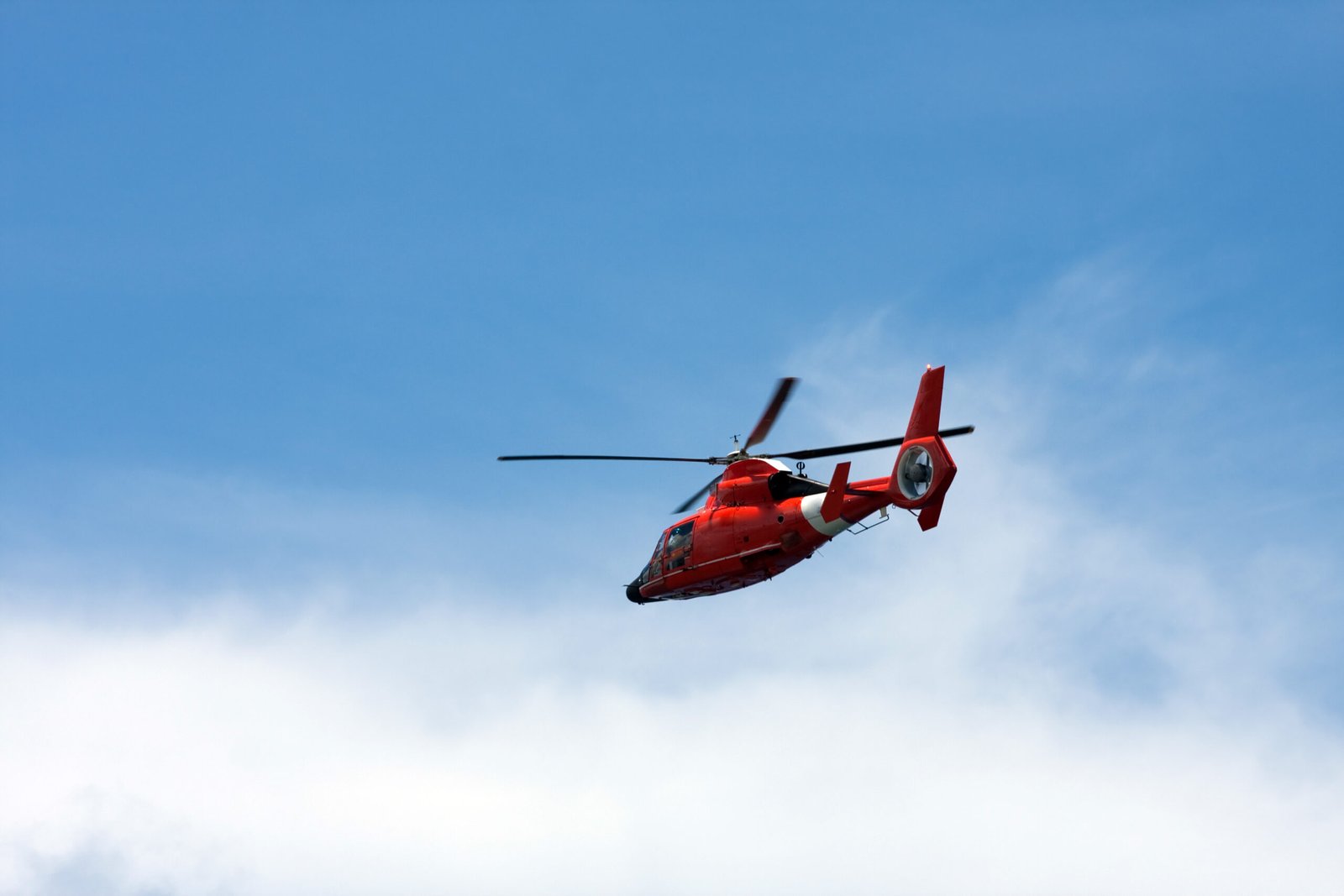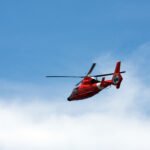FAA
Passenger Experience in the Skies: Trends Shaping Modern Air Travel
In an era where technology and innovation intertwine, the aviation industry is undergoing a significant transformation. As travelers embark on their journeys, the passenger experience is being elevated through various trends that focus on comfort, efficiency, and engagement. From the educational pathways leading to careers in aviation to the wealth of information available online, let’s explore how these elements are shaping modern air travel.
*Aviation Schools: A Diverse Array of Courses**
For those aspiring to soar through the skies professionally, aviation schools offer a plethora of courses tailored to diverse interests. From pilot training programs to aircraft maintenance and air traffic control training, there is something for everyone.
1. **Flight Training Programs** – These are perhaps the most recognized courses, focusing on developing skills for piloting small planes all the way up to commercial jets. Students learn about navigation, meteorology, and flight safety.
2. **Aircraft Maintenance Engineering** – For those fascinated by machines rather than flying them, this program delves into maintaining and repairing various types of aircraft. Graduates ensure that planes meet safety regulations before take-off.
3. **Air Traffic Control (ATC)** – This specialized course trains individuals to manage airport traffic effectively and safely coordinate flights within controlled airspace.
4. **Aviation Management** – Combining business acumen with aviation knowledge, this field prepares students for leadership roles within airlines or airports.
5. **Drone Operations** – With drones becoming an integral part of logistics and photography industries, many schools now offer focused programs on UAV piloting and regulations.
These varied educational routes not only prepare students for specific careers but also contribute significantly to enhancing passenger experiences by ensuring safety and operational efficiency.
*Top Aviation Blogs and Websites**
In today’s digital age, staying informed about aviation trends has never been easier thanks to numerous blogs and websites dedicated to this dynamic field:
**Airliners.net** – A comprehensive platform featuring discussions on aviation news and a vast photo database of aircraft from around the world.
**The Points Guy** – Focused on maximizing travel rewards points while navigating frequent flyer programs; it’s a must-read for savvy travelers looking for value.
**Simple Flying** – This blog provides daily updates on airline news, including fleet changes and route announcements that directly affect passengers.
**Flying Magazine** – Offering insights into pilot experiences along with tips for aspiring aviators.
Social media platforms also play a pivotal role in connecting enthusiasts:
Twitter accounts like @FlightAware provide real-time flight tracking updates.
Instagram hashtags such as #aviationlovers showcase stunning aerial photography that captivates both hobbyists and professionals alike.
*FAA Flight Schools: The Gold Standard**
When it comes to formal flight education in America, FAA-certified schools hold a prestigious status. These institutions follow rigorous guidelines set by the Federal Aviation Administration (FAA) ensuring high-quality training standards.

Additionally, simulators have revolutionized pilot training by providing realistic environments without leaving the ground. Advanced technology allows future pilots to hone their skills in safe yet challenging scenarios before taking command of real-world flights.
In summary, as we navigate through modern air travel’s enhancements—be it through educational advancements or informative resources—the passenger experience continues evolving dramatically. With every new trend arising from technological innovations or shifts in consumer behavior, one thing remains certain: flying will be more accessible, enjoyable, and informed than ever before!
From Biplanes to Drones: The Evolution of Aviation Technology
The realm of aviation has undergone a breathtaking transformation since the days when biplanes ruled the skies. As we soar into a new age defined by precision, efficiency, and innovation, it’s fascinating to explore how aviation technology has evolved and what it means for future generations. This journey isn’t just about the machines; it’s also about the education that shapes future aviators and enthusiasts.
### Aviation Schools: A Diverse Learning Landscape
Today’s aviation schools offer an impressive array of courses tailored to meet diverse interests within the field. Whether you’re dreaming of becoming a pilot, air traffic controller, or aerospace engineer, there’s a specialized program waiting for you.
1. **Pilot Training Programs**: These courses cover everything from private pilot licensing to advanced certifications like instrument ratings or commercial licenses. Aspiring pilots can choose between in-person training at flight schools or online theoretical courses.
2. **Aeronautical Engineering**: This track focuses on designing and constructing aircraft, including studying aerodynamics, materials science, and propulsion systems. Universities with strong engineering programs often provide hands-on experience with simulations and lab work.
3. **Air Traffic Control (ATC)**: ATC programs prepare students for careers managing air traffic flow in increasingly busy skies. Courses typically include simulation training that mimics real-life scenarios.
4. **Aviation Management**: For those interested in the business side of aviation—such as airport management or airline operations—aviation management programs offer insights into logistics, finance, and regulatory compliance.
5. **Drone Technology Courses**: With drones revolutionizing industries from agriculture to delivery services, specialized courses are emerging that focus on unmanned aerial systems (UAS) operations, regulations, and application development.
### Dive Deeper with Online Resources
As you immerse yourself in aviation studies or simply seek to stay updated on trends and technologies shaping this dynamic field, several blogs and websites are pure gold:
**AirlineReporter.com**: Delve into airline news with a focus on travel experiences.
**FlyingMagazine.com**: A comprehensive source for articles on flight safety tips and aircraft reviews.
**TheAirCurrent.com**: An insightful blog covering aviation business issues and market analysis.
**AviationWeek.com**: Offers industry professionals critical news regarding aerospace technologies.
Social media platforms also play an essential role in connecting enthusiasts:
Follow #AvGeek on Twitter for tweets from fellow aviation lovers.
Join Facebook groups dedicated to specific aircraft types or flying communities.
Check out Instagram accounts showcasing stunning aerial photography—#DronesDaily is particularly popular among drone aficionados.
### Flight Schools & Simulators
When it comes down to practical training experiences, FAA-certified flight schools pave the way for aspiring pilots across the United States. These institutions adhere strictly to Federal Aviation Administration (FAA) guidelines ensuring quality instruction:
1. **Local Flight Schools**: Often affiliated with regional airports, these schools typically have fleets of small aircraft alongside experienced instructors ready to guide your first flights.
2. **University Programs**: Many colleges now offer Bachelor’s degrees in Aviation Science coupled with extensive flight training opportunities through their own FAA-approved flight schools.
3. **Simulator Training Centers**: Advanced simulators replicate cockpit environments providing invaluable practice without leaving the ground! Environments range from general aviation planes to complex commercial jets.
In conclusion, as we reflect on our journey from biplanes buzzing through open skies to sophisticated drones navigating urban landscapes autonomously, it’s evident that education will remain foundational in this ongoing evolution of aviation technology. For anyone eager to take part in shaping tomorrow’s skies—now is undeniably an exciting time!

Flying Green: How Aviation is Tackling Climate Change
As the world grapples with the pressing issue of climate change, the aviation industry stands at a crucial crossroads. While air travel has long been associated with significant carbon emissions, a wave of innovation and education is transforming how we think about flying. From new sustainable technologies to eco-conscious training programs, the aviation sector is actively working to reduce its environmental footprint. Let’s explore how aviation schools are adapting their courses, discover valuable resources in the field, and examine FAA-approved training options that emphasize sustainability.
*Aviation Schools: Types of Courses**
Aviation education has evolved significantly over recent years to address both traditional flying skills and emerging green technologies. Various types of courses are now available to aspiring aviators:
1. **Pilot Training Programs:** Traditional flight schools offer comprehensive pilot training that includes ground school instruction on aerodynamics, navigation, and regulations alongside practical flight experience. With an increasing focus on hybrid and electric aircraft, many programs are beginning to incorporate lessons on environmentally friendly flying practices.
2. **Aeronautical Engineering:** These courses cover aircraft design and technology with an emphasis on developing more efficient engines and lighter materials that reduce fuel consumption. Students learn about sustainable aviation fuels (SAFs) and their potential role in mitigating climate impact.

3. **Air Traffic Management:** This discipline focuses on optimizing flight paths using advanced technology to minimize delays and fuel usage during takeoff, cruise, and landing phases. Emphasis is placed on reducing carbon footprints while maintaining safety standards.
4. **Sustainable Aviation Programs:** Some institutions now offer specialized tracks dedicated entirely to green aviation technologies—teaching students about renewable energy sources for aircraft power as well as emissions reduction strategies.
*Essential Resources for Aviation Enthusiasts**
For those interested in staying updated on green initiatives within aviation or seeking knowledge beyond classroom walls, numerous blogs, websites, and social media platforms exist:
**Blogs:**
– *The Air Current* offers insights into current trends affecting the airline industry.
– *GreenAir Online* focuses specifically on sustainability in air transport.
– *FlightGlobal* provides news updates regarding technological advancements.
**Websites:**
– The International Air Transport Association (IATA) outlines global efforts toward achieving net-zero emissions by 2050.
– Sustainable Aviation Fuel Users Group presents research findings related to SAF development.
**Social Media Platforms:**
– Twitter accounts like @AeroTimeNews showcase breaking news stories related to eco-friendly initiatives.
– LinkedIn groups such as “Sustainable Aviation” foster discussions among professionals passionate about greener skies.
*FAA Flight Schools: Training for Tomorrow’s Pilots**
When selecting a flight school or simulator program approved by the Federal Aviation Administration (FAA), aspiring pilots should consider those integrating modern sustainability practices into their curriculum:
Many FAA-certified flight schools now provide simulator sessions that allow trainees to practice emergency scenarios in electric aircraft models or learn about fuel-efficient flying techniques without leaving a hefty carbon footprint behind.
Reputable institutions like Embry-Riddle Aeronautical University have begun offering degrees focused not only on traditional piloting but also include coursework centered around sustainable practices within aviation operations.
Ultimately, as the industry embraces greener alternatives—from innovative technologies in aircraft design to educational programs aimed at fostering environmentally responsible pilots—the future of aviation looks brighter than ever before. By investing time into understanding these developments through various resources, we can all become part of this crucial transformation toward sustainability in our skies!
Soaring High: The Evolution of Aviation Technology
Aviation has come a long way since the Wright brothers took their first flight in 1903. Today, it stands as one of the most significant and technologically advanced industries worldwide. As we look to the skies, it’s essential to understand how aviation technology has evolved and continues to shape our world. A critical component in this evolution is education—specifically, aviation schools that offer various courses tailored to aspiring aviators.
*Types of Aviation Courses**
Aviation schools provide a plethora of programs designed for different interests and career paths within the industry. At the core of these offerings are:
1. **Pilot Training Programs**: These include Private Pilot License (PPL), Commercial Pilot License (CPL), and Airline Transport Pilot License (ATPL). Each course builds on skills necessary for flying aircraft, from basic navigation to advanced maneuvering.
2. **Aircraft Maintenance**: Schools focusing on maintenance train students in airframe and powerplant (A&P) certification, ensuring planes remain safe and operational.
3. **Aviation Management**: For those interested in the business side of flying, these programs cover airline operations, regulatory compliance, and logistics management.
4. **Air Traffic Control**: Specialized training prepares individuals for managing air traffic safely and efficiently—a role crucial for maintaining order in busy skies.
5. **Avionics Technology**: With the rise of digital systems in aviation, avionics courses teach students how to install, repair, and maintain complex electronic systems within aircraft.
As technology advances rapidly, so too do the educational offerings at aviation schools—ensuring that students are equipped with cutting-edge knowledge.
*Exploring Aviation Resources Online**
In today’s digital era, there exists a wealth of resources available online for both seasoned professionals and novices alike. Here’s a curated list of noteworthy blogs, websites, and social media platforms dedicated to aviation:
**Blogs & Websites**:
– *Airliners.net*: A forum for aviation enthusiasts featuring stunning photography.
– *Flying Magazine*: Offers articles on flying techniques as well as insights into new technologies.
– *AVweb*: A source for news related to general aviation.
**Social Media Platforms**:
– Twitter accounts such as @FltPlan or @AeroNews can keep you updated on real-time developments.
– Facebook groups focused on pilot training or aircraft restoration foster community engagement.
– Instagram showcases breathtaking aerial photographs under hashtags like #aviationlovers or #pilotlife.
These resources not only enrich knowledge but also create an engaging community where individuals can share experiences and advice.
*FAA Flight Schools & Simulators**
For anyone serious about pursuing a career in aviation—or even just wanting to fly recreationally—the Federal Aviation Administration (FAA) has accredited numerous flight schools across the United States. These institutions adhere strictly to safety protocols while providing comprehensive training.
Additionally, simulators play an increasingly vital role in pilot education today. Virtual simulators allow students to experience realistic flying conditions without leaving the ground—enabling them to practice emergency procedures or learn navigation skills without risk. Many FAA-certified schools incorporate simulators into their curriculum for enhanced learning experiences.
In summary, as we soar high into the future of aviation technology—from innovative aircraft designs to sophisticated training methods—we must recognize the vital role education plays. Whether through traditional flight schools or immersive online resources, aspiring aviators have unprecedented opportunities at their fingertips that will propel them into a promising skyward journey!

Soaring Skies: The Future of Sustainable Aviation Technology
Aviation, an industry synonymous with innovation and adventure, is on the brink of a remarkable transformation. As we hurtle toward a more sustainable future, the integration of cutting-edge technology will redefine how we think about flying. But before we dive into this thrilling era, let’s explore how aspiring aviators can prepare for these changes through various educational paths and resources.
*Aviation Schools by Types of Courses**
Diverse educational programs offer a multitude of courses that cater to every facet of aviation. At the forefront are flight training schools, which primarily focus on preparing students for piloting careers. These institutions provide hands-on flight experience complemented by ground school instruction covering navigation, meteorology, and regulations.

Then there are aviation management programs that equip future leaders with knowledge in finance, operations, and logistics within the aviation sector. For those interested in aircraft maintenance, airframe and powerplant (A&P) schools deliver specialized training to ensure safety and efficiency in aircraft operations.
Furthermore, universities often offer degree programs in aerospace engineering, focusing on designing and developing aircraft technologies. This sector is crucial for fostering innovations that enhance sustainability—such as electric propulsion systems or advanced aerodynamics.
*Lists of Aviation Blogs, Websites, Social Media Sites**
Staying informed is vital in an ever-evolving field like aviation. Fortunately, numerous blogs and websites provide insights into current trends and advancements. Noteworthy blogs include “Airliners.net,” where enthusiasts share photographs alongside discussions about airline operations worldwide. Similarly, “The Points Guy” offers travel tips while emphasizing sustainability initiatives within airlines.
For those who prefer concise updates through social media channels, Twitter has become a hub for aviation news; accounts like @FlightGlobal share real-time information on industry developments. Additionally, Instagram accounts such as @aviationdaily showcase stunning imagery from around the globe while highlighting eco-friendly practices adopted by various airlines.
YouTube also hosts a plethora of channels dedicated to aviation topics—like “Mentour Pilot,” wherein professional pilots discuss experiences while also addressing the importance of environmental stewardship in their profession.
*FAA Flight Schools/Airplane Schools/Simulators**
When it comes to official flight training in the United States, FAA-approved flight schools are pivotal. They adhere to strict regulations ensuring quality education for aspiring pilots. Some renowned institutions include Embry-Riddle Aeronautical University and ATP Flight School—both known for their comprehensive programs that combine practical flying experience with theoretical knowledge.
Additionally, simulation technology is revolutionizing pilot training methodologies. High-fidelity simulators allow students to practice complex maneuvers without leaving the ground—a critical aspect when considering emergency scenarios or learning new aircraft systems. Many modern flight schools incorporate simulation time as part of their curriculum to enhance overall proficiency while minimizing costs associated with actual flight hours.
In conclusion, as we look skyward towards sustainable aviation’s bright future filled with electric planes and eco-efficient technologies, it’s imperative that tomorrow’s pilots receive robust training through diverse educational avenues available today. With countless resources at their fingertips—from insightful blogs sharing industry wisdom to FAA-certified schools providing top-notch instruction—aspiring aviators are well-positioned to not just witness but actively participate in this exciting new chapter of aviation history! The sky may not be the limit after all; instead, it could be just the beginning!




